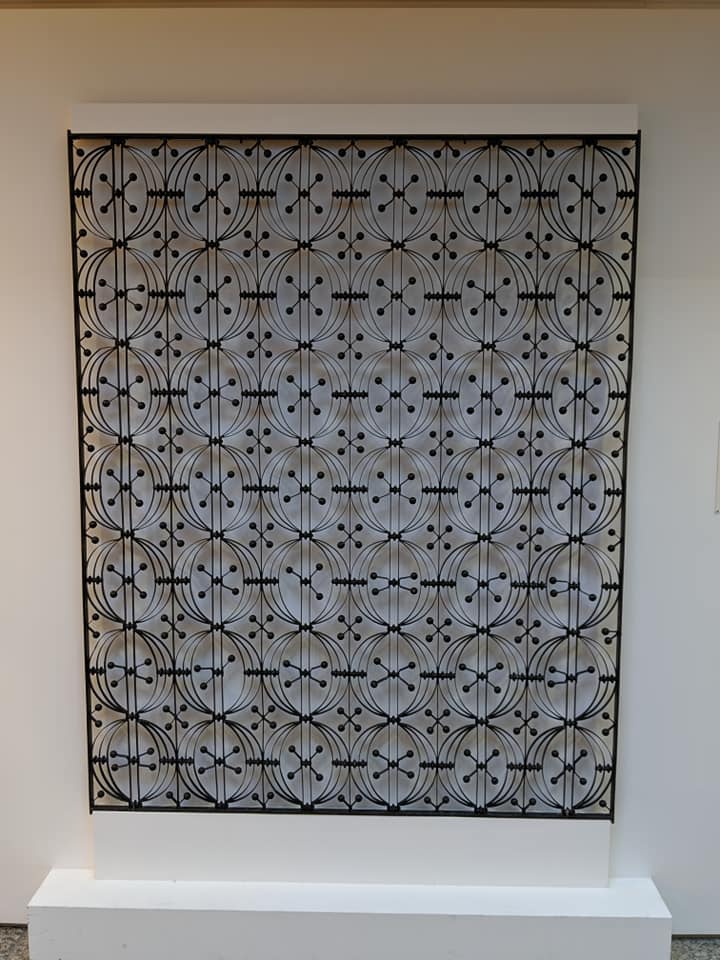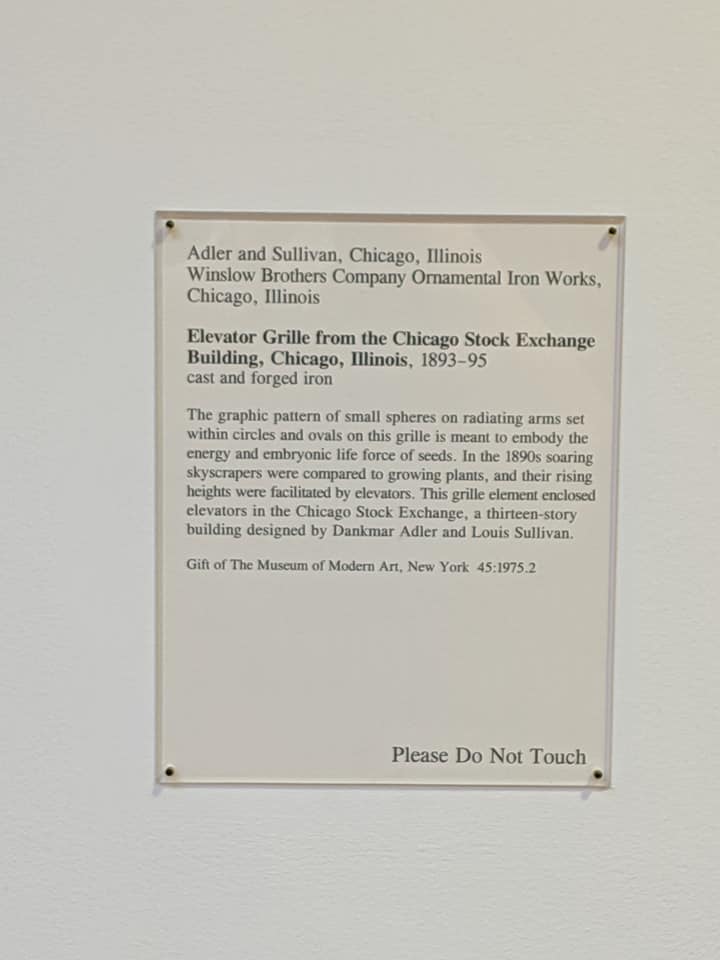This shit is pure wizardry.
Bow before the wooden spiral.
Just Another Person Who Thinks She Knows Something
This pitcher is one of a few objects that hangs out in a case at the bottom of the grand staircase at SLAM. I always have to fight the urge to rage and scream and throw a tantrum because TIFFANY PITCHER TUCKED AWAY IN THE MOST INAUSPICIOUS PLACE EVER OMFG WHAT ARE YOU PEOPLE EVEN THINKING. And then I stop and remind myself that I’m way more stressed out about it than everyone else in the building is and that I should stop and get a life. But look at this gorgeous silver work and tell me that it doesn’t deserve better placement than just tucked away at the bottom of the stairs.
This piece is painfully evocative; it hits you like a swift kick to the gut. You know immediately what it is meant to portray and why. You know why you are meant to feel the way you do when you look at it. There is no wiggle room for interpretation. And yet, in the harshness, there is a delicate beauty of form and composition, of balance… and in the darkness, a tiny glimmer of hope.
This is one of those paintings that you just have to experience in person. No mere photograph is ever going to do it justice. You turn the corner from a room full of 18th century religious art and find yourself looking through a doorway with the long view that I’ve presented one of the photos above of this absolutely magnificent piece of stunning beauty. I was dumbfounded the first time I saw it, and it always makes me giddily happy to see it when I turn that corner. It isn’t a particularly overwhelming subject (in fact, if you asked most art historians, they would poo-poo it and roll their eyes at it as a bit of play-acting attempting art), nor a particularly effective execution of the subject itself (if you look closely in the detail shots, you can see that the statues are rendered rather poorly, and the bones in the sand are out of proportion, etc.), however, the overall effect is stunning. When the sun is shining and the light comes in just so from the outer galleries, it causes the frame to catch the light, which illuminates the sunset even more, giving it almost an ethereal glow.
Good thing I didn’t go to school for this shit, right? I just make it up as I go along!
So here’s where I start to turn on the nerd a little bit… This painting, while definitely being high Victorian (as evidenced by the cluttery nature background and the ‘false modesty’ drape for the boy while leaving the girl nude aside from the flowers which are an allegorical reference in and of themselves), is also a masterclass in emulating high Renaissance portraiture ideals, 18th century framing and pastoral design, and 17th century color palettes. And that, my friends, was a run-on sentence of epic proportions.
I love this work because it shows a striking balance of color, composition, and simplicity despite being incredibly complex stylistically.
Fun fact: my favorite color when I was a child was yellow. Secondary fun fact: when I was a child, I wanted to learn how to blow glass, until I learned just how hot glass was (and considering I couldn’t get a casserole dish out of the oven without burning myself, introducing wee me to the fiery depths of a hellish glass furnace would not have gone well).
Glassware is one of my favorite forms of artwork; in this case, the stark harsh lines are broken up by softer, flowing edges and gentler waves, giving the illusion of motion within the larger framework. The light dances between the angles and planes, refracting and reflecting, creating a gentle dance that is both masculine and feminine, which definitely designates the design as American and probably closer to 1858-1860, as earlier periods were slightly more ornate and bending more toward the effeminate, as toward the European styles.
Today’s work was by request of my niece, Charlotte, who is a wee dancer herself, and who recently had her spring recital.
Impressionist sculpture isn’t something that you really think of as a homogenous concept – it’s either realistic or abstractionistic, but as you look at what almost looks like brush strokes within the thumbworking in the original clay-casting, you get a feel for the impressionism that Degas tried to instill in his sculptures. There’s another bronze of his at SLAM that’s similar that I’ll cover at a later date that has similar working.
What I like most about this casting is that they aren’t afraid to go with the mixed media, adding in muslin and ribbon to add to the illusion of our little dancer being just as alive and bravely stepping out onto the stage as she would have been in her lifetime.
Truly, this is one of the prized pieces in SLAM’s Impressionist galleries, and with good reason.


This beautiful grille is just outside the gift shop and the cafe on the first floor of the museum, just chillin’. It gets natural light from an overhead window and really has pride of place where it is. The design itself is very simple, skewing toward Bauhaus-inspired modernism before there was such a thing, and well-worn, as you can clearly see from the bits that have come off over the years.
The designs of the 1890’s were often about form over function, but in this case, they were pretty evenly matched. The artistic balances well with the functionality and practicality in a way that is attractive and informal rather than stilted and classist.